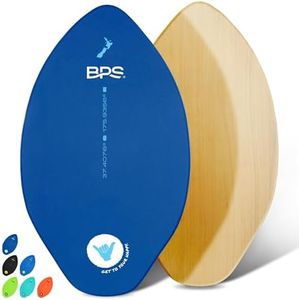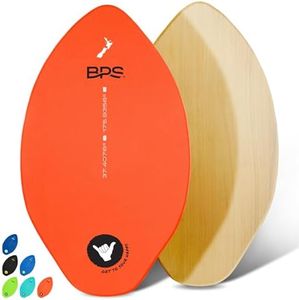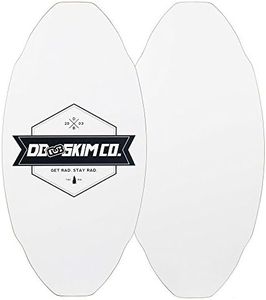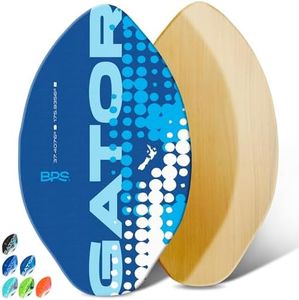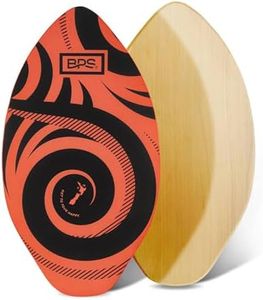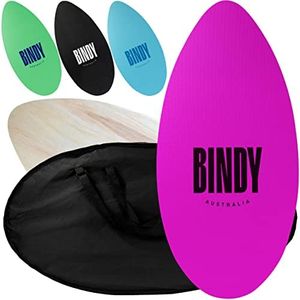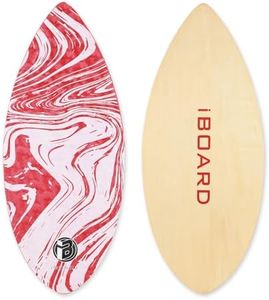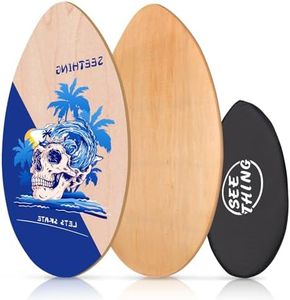We Use CookiesWe use cookies to enhance the security, performance,
functionality and for analytical and promotional activities. By continuing to browse this site you
are agreeing to our privacy policy
10 Best skimboards
From leading brands and best sellers available on the web.Buying Guide for the Best skimboards
When picking a skimboard, it’s important to match the board to your skill level, the type of skimboarding you want to do (like flatland or wave riding), and your body size. Skimboards come in a range of materials, shapes, and sizes, each affecting how the board behaves on the water and sand. Taking a little time to understand the key specifications will help you choose a board that gives you the best possible experience, whether you’re just starting out or looking to progress.Board SizeBoard size refers to the length and width of the skimboard. This spec is important because the right size makes it easier to control the board, helps with speed, and affects your stability. Generally, smaller boards are more maneuverable but harder to balance on, while larger boards are more stable and easier for beginners. If you’re lighter or want to do tricks, go for a smaller board. If you’re heavier or just starting, a bigger board will help you get the hang of skimboarding. Matching the board size to your body weight and riding style will help you enjoy the sport more.
MaterialSkimboards are commonly made from wood or foam with fiberglass or carbon fiber reinforcement. The material affects weight, durability, and how well the board performs in various conditions. Wooden boards are heavier and more durable for sliding on sand, popular for flatland (inland) skimboarding. Foam boards are lighter and more buoyant, making them better for wave riding in the ocean but also more fragile. If you plan to ride waves, consider foam; if you're skimming on inland water or wet sand, wood may be a better fit.
Shape and RockerThe shape of the board, especially the nose and tail, along with the rocker (the curve from tip to tail), influences speed, control, and how the board handles water or obstacles. A flatter rocker gives more speed on smooth surfaces but can catch on waves. More pronounced rocker helps with maneuvering in waves but may slow you down on flat water. Think about where you’ll be riding most often: flatter boards for speed and sand, more rocker for waves and tricks.
ThicknessThickness impacts flotation and maneuverability. Thicker boards float better, which is useful in deeper or wavy water, while thinner boards are faster on sand and easier to throw for flatland tricks. Beginners and heavier riders might benefit from a thicker board for more flotation, while experienced skimboarders or lighter individuals can manage thinner boards for faster and snappier moves.
Traction and Deck SurfaceSome skimboards come with a textured or padded deck for better grip, while others may require you to add wax or traction pads separately. Good grip on the top of the board helps you stay on, especially when wet, which makes a huge difference for both comfort and safety. If you’re new, look for a board that’s either pre-padded or plan to add grip before riding.
